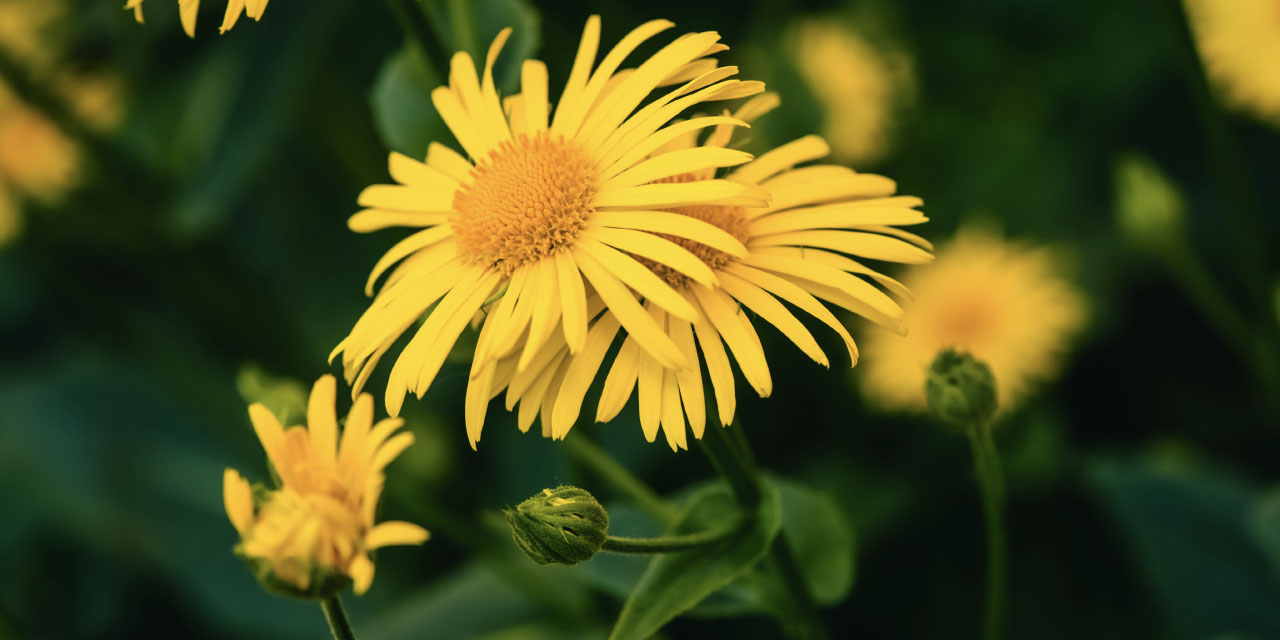Arnica, natures soothing gift for pain relief.
In the realm of natural remedies, one name often arises when it comes to relieving pain and soothing bruises – Arnica. This humble flower, native to mountainous regions of Europe and North America, has been cherished for centuries for its remarkable properties.
Arnica 101, what’s the buzz about?
Arnica, scientifically known as Arnica montana, is a perennial herb that produces bright yellow, daisy-like flowers. These flowers are the source of the medicinal compound found in Arnica preparations. Traditionally, Arnica has been used in herbal medicine for its anti-inflammatory and analgesic (pain-relieving) properties.
Arnica Benefits: Nature's First Aid
Pain Relief:
Arnica's natural compounds, such as helenalin, work wonders in reducing pain and inflammation. Whether it's aching muscles, joint pain, or the aftermath of a minor injury, Arnica is known for providing relief.
Bruise Buster:
Arnica's ability to reduce bruising and swelling makes it a go-to remedy for those accidental bumps and knocks. It's like nature's first aid kit in a flower.
Anti-Inflammatory:
Arnica's anti-inflammatory properties can help alleviate discomfort associated with various conditions, including arthritis and osteoarthritis.
Arnica come in many different forms: Choose Your Favorite
Arnica Cream:
Arnica cream is a popular choice for localized pain relief. You can apply it directly to the affected area, and it's known for its soothing and non-greasy texture.
Arnica Ointment:
Arnica ointment is a thicker, more concentrated form of Arnica. It's great for targeting specific areas that need extra attention.
Arnica Salve:
Arnica salve is similar to ointment but often contains a blend of additional herbal ingredients for enhanced healing properties.
Arnica Roll-On:
Arnica roll-ons offer convenience and mess-free application. They are perfect for on-the-go pain relief.
Arnica Cream for Bruises: A Healing Touch
Arnica cream, in particular, is widely known for its effectiveness in reducing bruising and speeding up the healing process. Here's how to use it for bruise relief:
Cleanse the Bruised Area:
Gently wash the bruised area with mild soap and water, then pat it dry.
Apply Arnica Cream:
Take a small amount of Arnica cream and gently massage it into the bruise. Be sure to follow the product's instructions for application.
Repeat as Needed:
Depending on the severity of the bruise, you can reapply Arnica cream 2-3 times a day.
Avoid Open Wounds:
Do not apply Arnica cream to open wounds or broken skin.
While Arnica is generally safe for topical use, it should not be ingested. Be cautious and avoid applying Arnica to broken skin or open wounds. Also, if you have allergies to plants in the Asteraceae family (like marigolds or ragweed), consult a healthcare professional before using Arnica.
The Arnica flower is truly a gift from nature, offering relief from pain, reducing bruising, and soothing inflammation. Whether in the form of a cream, ointment, salve, or roll-on, Arnica has found its place as a trusted ally in the pursuit of natural pain relief. With Arnica by your side, you're embracing the healing power of Mother Nature herself.




